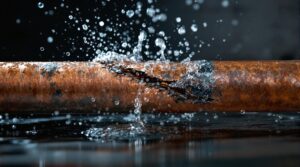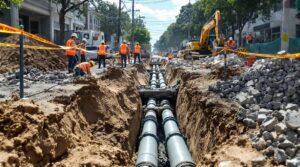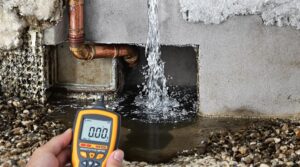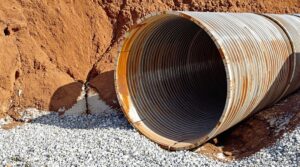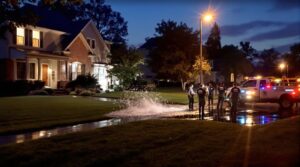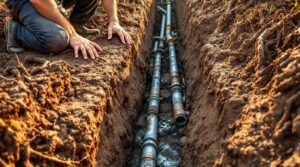Homeowners insurance typically covers damage caused by leaking pipes if the leak is sudden and accidental. This includes burst pipes, but excludes gradual or maintenance-related leaks. Leaks from appliances, such as dishwashers and washing machines, may also be covered if sudden and accidental. However, costs for pipe repair and replacement of faulty appliances are usually excluded. Examining specific coverage options and exclusions can provide homeowners with a thorough understanding of their policy's protection against leaking pipes and water damage.
Key Takeaways
- Homeowners insurance typically covers sudden and accidental leaks from burst pipes, but not gradual leaks or maintenance-related issues.
- Damage from plumbing problems, like water damage to walls and floors, is generally covered under dwelling coverage.
- Leaks from appliances and fixtures are usually covered if sudden and accidental, but costs for replacing faulty appliances are excluded.
- Homeowners insurance often excludes water damage from sewer backups, requiring additional water backup coverage for protection.
- Regular maintenance is essential to prevent plumbing leaks and ensure coverage in the event of an emergency.
What Types of Leaking Pipes Are Covered by Homeowners Insurance?
Homeowners insurance policies generally have specific provisions for various types of leaking pipes. Insurance typically covers sudden and accidental leaks from burst pipes, especially those caused by freezing temperatures or unexpected malfunctions. Damage caused by leaking pipes that leads to water damage in the home is generally covered under dwelling coverage, excluding the cost of pipe repair itself. This means that homeowners insurance cover may include damage resulting from plumbing problems, such as water damage to walls, floors, and ceilings. However, not all types of leaks are covered by standard homeowners insurance policies. Leaks from appliances such as washing machines may be covered if they occur unexpectedly and lead to damage to property. It is essential to review insurance policies to understand what is covered and what is not, especially when it comes to plumbing-related issues and water or sewage damage. Coverage may vary depending on the insurance provider and policy terms. Some homeowners opt for additional sewer line coverage to protect against costly damage from backed-up or broken sewer lines that standard policies typically exclude. Moreover, homeowners should consider the importance of understanding their specific home insurance plumbing leak coverage, as certain exclusions can significantly impact their financial protection. Many policies may include limited coverage for gradual leaks, which can lead to substantial damage if not detected in time. By thoroughly reviewing the details of their insurance policy and discussing options with their insurance agent, homeowners can ensure they have adequate protection against potential losses related to plumbing issues.
Are Leaks From Appliances and Fixtures Covered by Homeowners Insurance?
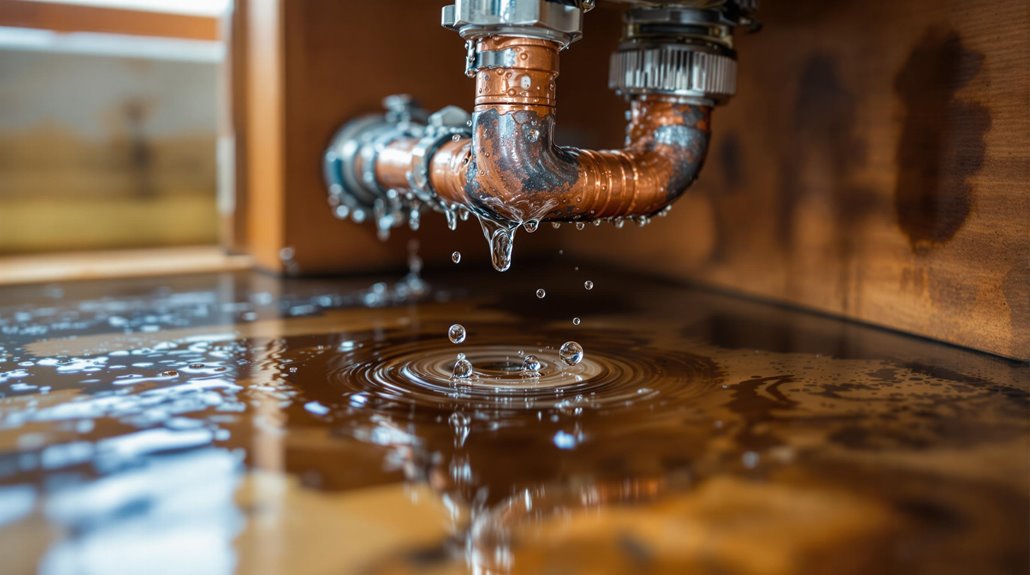
The scope of coverage for leaking pipes under homeowners insurance extends beyond plumbing infrastructure to include damage caused by malfunctioning appliances and fixtures. Standard homeowners insurance typically covers sudden and accidental appliance leaks, such as those from dishwashers or washing machines, as long as the issue is not due to wear and tear. Insurance may cover water damage resulting from overflowing fixtures, like bathtubs or sinks, if the overflow is accidental and not a result of negligence.
Homeowners policies generally exclude the costs of replacing the faulty appliance itself. Optional equipment breakdown coverage may be necessary for appliance replacement. Insurance companies offer varying levels of coverage for appliance leaks, so it is important for homeowners to review policy details to understand specific coverage limitations. Understanding the extent of insurance coverage can help homeowners better manage plumbing issues and minimize financial losses due to unexpected appliance leaks. Proper claims documentation must be submitted to the insurance company within required timeframes to support any water damage repairs.
What Are the Common Exclusions for Leaking Pipes in Homeowners Insurance?
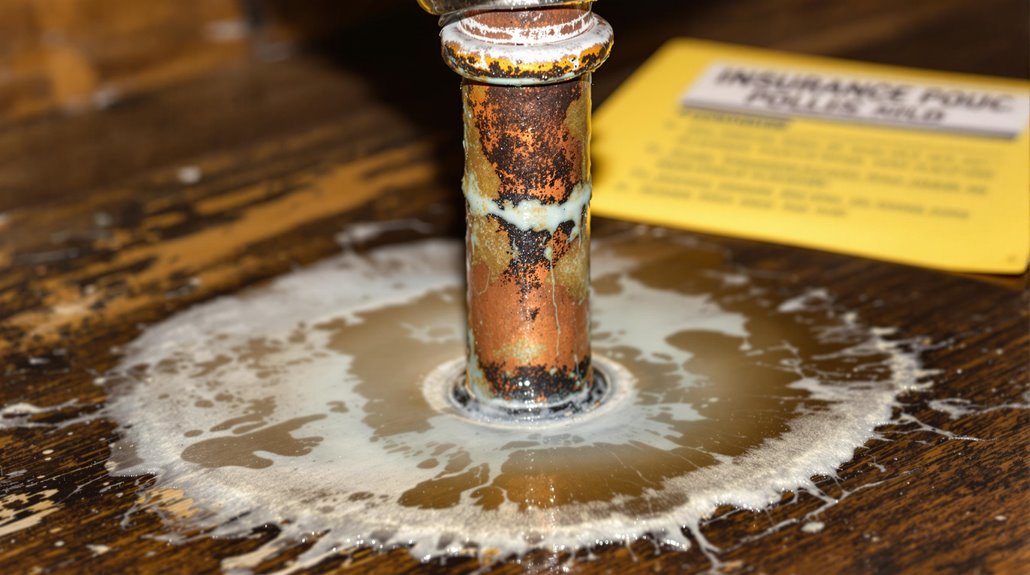
How do exclusions within homeowners insurance policies for leaking pipes impact coverage? Exclusions can greatly limit the scope of protection for homeowners, making it essential to understand what is not covered. A standard homeowners policy typically excludes damage caused by gradual leaks, wear and tear, and maintenance issues, placing the onus on homeowners to maintain their plumbing systems. Like high-value item limitations, specialized endorsements may be necessary to ensure adequate coverage for extensive water damage.
| Exclusions | Description |
|---|---|
| Gradual Leaks | Damage caused by slow, ongoing leaks is not covered. |
| Negligence | Failure to maintain the home, such as not heating it during cold weather, can lead to claim denials. |
| Maintenance Issues | Leaks from corroded or rusted pipes are not insurable under standard policies. |
| Water Backup | Standard policies do not cover water damage from sewer backups, unless additional water backup coverage is purchased. |
Homeowners must be aware of these exclusions to avoid unexpected financial burdens. Regular maintenance and optional coverage can help mitigate these risks.
How to Prevent Leaking Pipes and Reduce the Risk of Water Damage
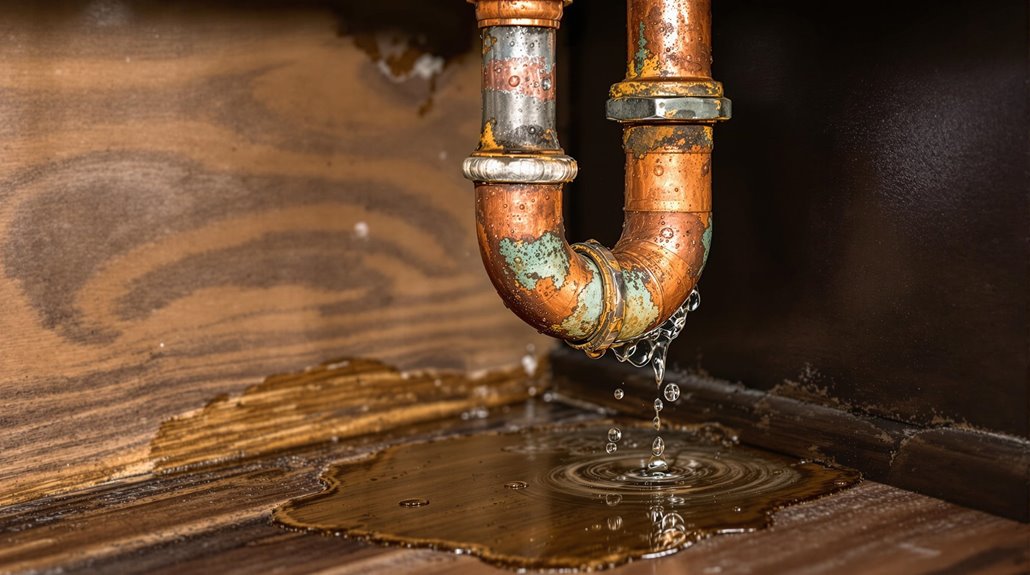
Preventing leaking pipes requires proactive measures to maintain a home's plumbing system. Regular maintenance is vital, as plumbing leaks account for approximately 13.7% of all water used in homes, potentially wasting an average of 10,000 gallons per year. Insulating exposed pipes in unheated areas can prevent freezing, which can cause significant water damage. A 1/8-inch crack in a pipe can release up to 250 gallons of water daily if not addressed. Installing smart water leak sensors can alert homeowners to leaks early, helping to mitigate water damage and associated repair costs. Annual maintenance for appliances and plumbing systems can identify and fix wear and tear before they result in leaks, which is fundamental since most insurance policies do not cover damage from neglected maintenance issues. By taking these measures, homeowners can reduce the risk of water damage and guarantee their home insurance cover is not compromised. While prevention is key, understanding your insurance policy limits is crucial for ensuring adequate coverage in case of unexpected plumbing emergencies.
What Additional Coverage Options Are Available for Leaking Pipes and Water Damage?
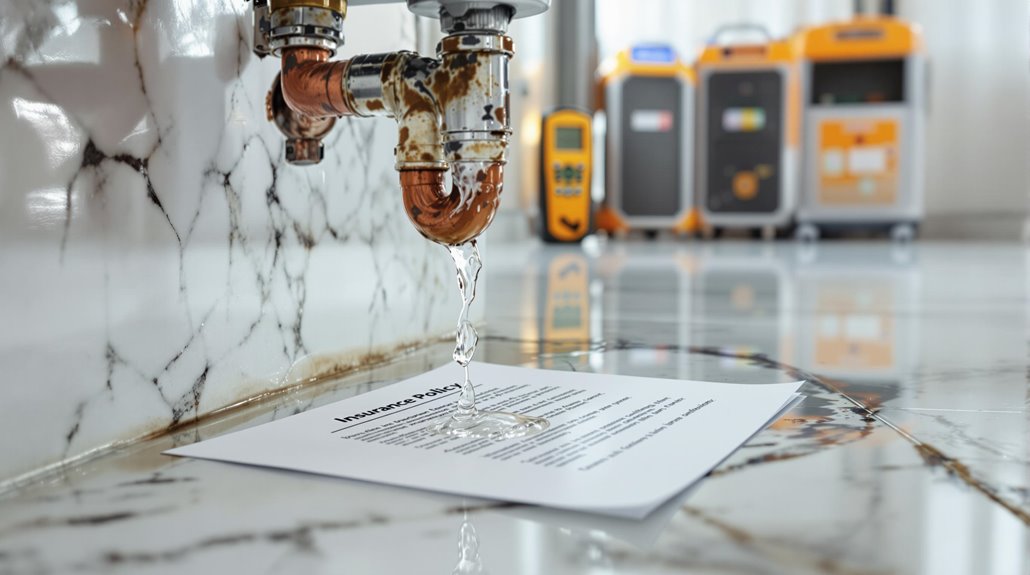
Homeowners who take proactive measures to maintain their plumbing systems can considerably reduce the risk of water damage from leaking pipes. Nevertheless, unforeseen incidents may still occur, and standard homeowners insurance may not suffice. Additional coverage options are available to guarantee thorough protection. Homeowners can consider adding water backup coverage to their policies, which provides protection against sewer backups and sump pump failures. Equipment breakdown coverage is also available for appliance failures caused by leaking pipes. For water damage caused by flooding, flood insurance must be purchased separately, as standard homeowners insurance typically excludes this type of damage. Consulting with an insurance agent can help homeowners identify necessary coverage options, such as endorsements for plumbing damage, to cover excess repair costs. By reviewing and customizing their insurance policies, homeowners can secure the protection they need against leaking pipes and related water damage. Liability coverage may also be worth exploring. Working with a public adjuster can help maximize compensation when filing claims for water damage from leaking pipes.
